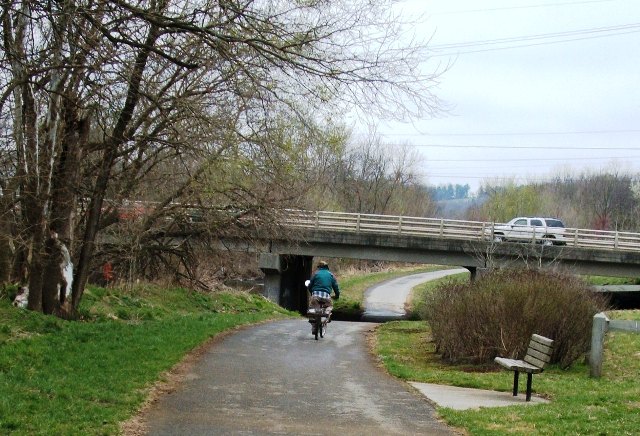
The effort is called “Livable Roanoke Valley,” the latest initiative designed to gather and collate opinions on what people in the Roanoke Valley want to see done in order to make the area a better place to live, work and play. What’s different this time said Jake Gilmer, Project Manager for Livable Roanoke Valley, is that for the first time “a regionally coordinated plan of this fashion very much focused on issues of livability” may result.
Gilmer, who works for the Roanoke Valley-Alleghany Regional Commission, took part in conducting interactive, public workshops held earlier this week at the Virginia Museum of Transportation, as well as in Roanoke County, Vinton, Salem, Fincastle and New Castle, seeking input from citizens “about what they value in their community and the priorities they believe our region should have for the future.”
Promoting greater economic opportunity and a greater quality of life is the goal; Gilmer looks for follow-up public meetings in the months ahead as the input gathered is fashioned into a plan and perhaps a final document in the next year or so. More than 50 organizations, including local governments, nonprofits, businesses and educational institutions are already involved in the effort.
Those founding “stakeholders” have already weighed in with their opinions on such topics as transportation, housing, economic development, the environment and education. Gilmer shared those results and asked for additional feedback from the Roanoke County Planning Commission earlier this week – even putting commission members through the same exercise that stakeholders and local residents are being asked to undertake, asking: “What’s important to you about making the valley a more livable place?”
A federal grant will help support the Livable Roanoke Valley project, said Gilmer. A survey conducted by Virginia Tech of 1000 people in the valley is also providing some insight. Gilmer outlined a few of the challenges to overcome: “We’re losing young people [for starters].” The unique social challenges in Roanoke City – several struggling schools, crime, poor housing stock, etc., “affects the entire region,” he added.
Results from the stakeholder survey, whether the topic was housing, land use, transportation, economic development or health & education, often cited a lack of local government collaboration and regional cooperation as one weakness to overcome. “Collaboration is an area where we may be weak,” said Gilmer.
The greenway system was cited as a major recreation and economic development asset, although its completion often was mentioned as one of the “opportunities” to be tackled. Racial segregation in Roanoke City, job losses, sprawl from development and lack of access to passenger rail service were other concerns.
Stakeholders also expressed concern that the Roanoke Valley is losing political ground in Richmond, as growing population centers elsewhere in the state gain more clout and experienced General Assembly veterans like Morgan Griffith (now in Congress) are no longer in the state legislature.
Finding “more common ground” between urban centers like Roanoke City and Salem, and their country cousins in Fincastle and New Castle (which are also in the domain of the Roanoke Valley-Alleghany Regional Commission) is another goal.
Seven thousand calls were made to find 1000 people willing to take the 30 minute Virginia Tech survey that helped bring local priorities into focus. Economic development and job creation was at the top of the priority list, with ensuring clean air and water next in line. Many of those surveyed even said they would pay more to preserve the valley’s clean water supply.
Planning for efficient fire and police services, improving the education system, better preventative health care (with lower costs), encouraging energy efficiency and local energy sources, and providing better transportation choices also headed the wish lists for those surveyed.
Gilmer admitted to the Roanoke County Planning Commission that this plan “could sit on the shelf” like other regional efforts have done in the past but this time he said the Livable Roanoke Valley effort has plenty of buy-in from the stakeholders. He’s hoping the additional public input from this past week and beyond will make all the difference now.
(Those that couldn’t make the public meetings can still weigh in, and to find additional information visit livableroanoke.org.)
by Gene Marrano


